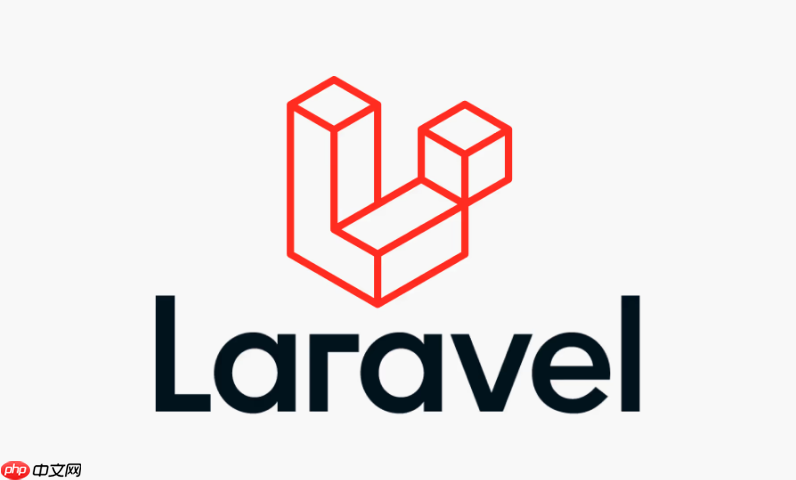多态关联让一个模型可同时属于多种类型模型,如评论可关联文章、视频等。通过添加commentable_id和commentable_type字段实现灵活指向,使用morphTo和morphMany定义关系,并用with()预加载避免N+1查询问题,适用于评论、标签、文件上传等通用场景,提升扩展性与代码复用性。

Laravel Eloquent 中的多态关联,简单来说,就是让一个模型能够同时属于多个不同类型的模型。想象一下,你的评论(Comment)模型,既可以评论文章(Post),也可以评论视频(Video),甚至可以评论图片(Image)。通过多态关联,你不需要为每种可评论的类型都创建单独的关联字段,而是用一套字段(通常是
commentable_id
commentable_type
要实现多态关联,主要涉及三个部分:数据库结构、模型定义以及数据的存取。我个人觉得,理解它的核心在于那两个额外的字段:
{relation_name}_id{relation_name}_type以一个评论系统为例,我们希望
Comment
Post
Video
1. 数据库结构调整: 在你希望“多态”的那个模型(比如
comments
commentable_id
commentable_type
App\Models\Post
App\Models\Video
一个
comments
Schema::create('comments', function (Blueprint $table) {
$table->id();
$table->text('content');
$table->morphs('commentable'); // 这一行会自动添加 commentable_id 和 commentable_type
$table->timestamps();
});morphs('commentable')commentable_id
commentable_type
2. 模型定义:
“子”模型(Comment)定义 morphTo
Comment
morphTo
// app/Models/Comment.php
namespace App\Models;
use Illuminate\Database\Eloquent\Factories\HasFactory;
use Illuminate\Database\Eloquent\Model;
class Comment extends Model
{
use HasFactory;
protected $fillable = ['content', 'commentable_id', 'commentable_type'];
public function commentable()
{
return $this->morphTo();
}
}commentable()
commentable_id
commentable_type
“父”模型(Post, Video)定义 morphMany
morphOne
Post
Video
morphMany
Comment
// app/Models/Post.php
namespace App\Models;
use Illuminate\Database\Eloquent\Factories\HasFactory;
use Illuminate\Database\Eloquent\Model;
class Post extends Model
{
use HasFactory;
protected $fillable = ['title', 'body'];
public function comments()
{
return $this->morphMany(Comment::class, 'commentable');
}
}// app/Models/Video.php
namespace App\Models;
use Illuminate\Database\Eloquent\Factories\HasFactory;
use Illuminate\Database\Eloquent\Model;
class Video extends Model
{
use HasFactory;
protected $fillable = ['title', 'url'];
public function comments()
{
return $this->morphMany(Comment::class, 'commentable');
}
}morphMany(Comment::class, 'commentable')
'commentable'
Comment
morphTo()
3. 数据的存取:
创建关联数据: 你可以像操作普通关联一样来创建多态关联的数据。
$post = Post::find(1);
$post->comments()->create([
'content' => '这是一篇关于文章的评论。'
]);
$video = Video::find(1);
$video->comments()->create([
'content' => '这是一条关于视频的评论。'
]);获取关联数据: 获取评论时,你可以直接通过父级模型获取其所有评论:
$postComments = Post::find(1)->comments; // 获取文章的所有评论 $videoComments = Video::find(1)->comments; // 获取视频的所有评论
你也可以通过评论反向获取其所属的父级模型:
$comment = Comment::find(1);
$commentable = $comment->commentable; // 获取评论所属的父级模型 (Post 或 Video)
if ($commentable instanceof Post) {
echo "评论属于文章: " . $commentable->title;
} elseif ($commentable instanceof Video) {
echo "评论属于视频: " . $commentable->title;
}这种
instanceof
多态关联还有
morphOne
morphToMany
morphMany
morphTo
morphMany
在我看来,选择多态关联而非传统关联,主要取决于你的业务场景是否具有“灵活指向性”的需求。传统的一对多或多对多关联,要求父模型类型是固定的。例如,
comments
post_id
posts
我总结了几点,什么时候多态关联会是更好的选择:
“一个东西可以属于多种不同类型的东西”: 这是最核心的判断标准。比如一个
Image
Product
User
Article
images
product_id
user_id
article_id
null
imageable_id
imageable_type
未来扩展性考虑: 当你预见到未来可能会有新的模型类型需要关联到现有模型时,多态关联的优势就体现出来了。比如你的评论系统目前只支持文章和视频,但未来可能要支持博客、播客、活动等。如果使用传统关联,每次新增一种类型,你都需要修改
comments
morphMany
comments
避免重复代码和复杂逻辑: 如果你为每种父模型都创建单独的关联(例如
postComments()
videoComments()
commentable()
清晰的语义表达: 当你明确知道某个模型(比如
Tag
Tag
Post
Video
当然,多态关联并非没有代价。它的查询在某些特定场景下可能会比直接的外键关联稍微复杂一点点,尤其是在处理 N+1 查询问题时需要额外的注意。但总的来说,在上述场景下,多态关联带来的结构清晰和开发效率提升,是远超这些“小麻烦”的。
我个人在项目中用多态关联用得最多的,就是那些“通用型”的功能模块。它们不依附于某个特定的业务实体,而是可以被多个业务实体共享。
这里列举几个非常经典的场景:
评论系统 (Comments): 这几乎是多态关联的代名词了。无论是文章、产品、视频、用户动态,都可以拥有评论。
Comment
commentable_id
commentable_type
Post
Video
Product
User
Comment
Comment
morphTo
commentable
Post/Video/Product/User
morphMany
comments
标签系统 (Tags): 标签通常用于对不同类型的内容进行分类或标记。一个标签可以应用于文章、图片、用户、产品等。
Post
Image
User
Product
Tag
Tag
morphToMany
taggables
Post/Image/User/Product
morphToMany
tags
taggables
taggables
tag_id
taggable_id
taggable_type
图片/文件上传 (Images/Files): 网站中各种内容都需要配图或附件。用户头像、文章插图、产品图片、订单附件等,都可以归结为
Image
File
User
Post
Product
Order
Image
File
Image/File
morphTo
imageable/fileable
User/Post/Product/Order
morphOne/morphMany
image/images
活动日志/审计追踪 (Activity Log/Audits): 记录系统中各种操作的日志,比如“用户A创建了文章B”、“用户C更新了产品D”。这个日志模型需要关联到被操作的实体。
User
Post
Product
ActivityLog
ActivityLog
morphTo
loggable
User/Post/Product
morphMany
activityLogs
点赞/收藏 (Likes/Favorites): 用户可以点赞或收藏文章、评论、视频等。
Post
Comment
Video
Like
Favorite
Like/Favorite
morphTo
likeable/favorable
Post/Comment/Video
morphMany
likes/favorites
这些场景都有一个共同点:它们抽象出了一个通用的“能力”或“属性”,而这种能力或属性可以附加到多个不同类型的实体上。多态关联完美地解决了这种“一对多但多方类型不确定”的关联需求,让你的数据模型设计更加灵活和健壮。
N+1 查询问题在多态关联中尤为突出,因为你不仅要查询关联数据,还要根据
_type
解决 N+1 问题的核心是使用 Eloquent 的预加载 (Eager Loading)。对于多态关联,预加载的语法稍有不同,但原理是一致的。
1. 预加载 morphTo
Comment
Post
Video
with()
// 假设你想获取所有评论,并同时加载它们的父级模型
$comments = Comment::with('commentable')->get();
foreach ($comments as $comment) {
echo "评论内容: " . $comment->content . "\n";
// 此时访问 $comment->commentable 不会触发新的查询
if ($comment->commentable) {
echo "所属类型: " . class_basename($comment->commentable_type) . "\n";
echo "所属标题: " . $comment->commentable->title . "\n"; // 假设 Post 和 Video 都有 title 字段
}
echo "------\n";
}with('commentable')comments
commentable_type
posts
videos
posts
videos
2. 预加载 morphMany
morphOne
Post
Video
Comment
// 假设你想获取所有文章,并同时加载它们的评论
$posts = Post::with('comments')->get();
foreach ($posts as $post) {
echo "文章标题: " . $post->title . "\n";
foreach ($post->comments as $comment) {
echo " - 评论: " . $comment->content . "\n"; // 此时访问 $post->comments 不会触发新的查询
}
echo "------\n";
}
// 假设你想获取所有视频,并同时加载它们的评论
$videos = Video::with('comments')->get();
foreach ($videos as $video) {
echo "视频标题: " . $video->title . "\n";
foreach ($video->comments as $comment) {
echo " - 评论: " . $comment->content . "\n";
}
echo "------\n";
}这里
with('comments')3. 带有条件的预加载: 如果你只想加载满足特定条件的关联数据,可以在
with()
$comments = Comment::with(['commentable' => function ($morphTo) {
// 假设你想对加载的父模型进行筛选,但这里其实是对 morphTo 的查询条件
// 对于 morphTo 预加载,通常不需要在此处添加复杂条件,因为它是根据 _type 动态查询的
// 更常见的场景是对 morphMany/morphOne 预加载进行条件筛选
}])->get();
// 比如,获取所有文章,但只加载那些内容包含“重要”的评论
$posts = Post::with(['comments' => function ($query) {
$query->where('content', 'like', '%重要%');
}])->get();4. 避免类名混淆(morphMap
commentable_type
App\Models\Post
morphMap
在
App\Providers\AppServiceProvider.php
boot
use Illuminate\Database\Eloquent\Relations\Relation;
public function boot()
{
Relation::morphMap([
'posts' => 'App\Models\Post',
'videos' => 'App\Models\Video',
// ... 其他需要映射的模型
]);
}这样,
commentable_type
'posts'
'videos'
总之,多态关联的 N+1 问题和普通关联的 N+1 问题本质上是一样的,都是因为惰性加载导致的。只要记住,在可能访问关联关系的地方,提前使用
with()
with('relationName')with(['relationName' => function($query){...}])以上就是Laravel Eloquent如何使用多态关联_多种模型关联实现的详细内容,更多请关注php中文网其它相关文章!

每个人都需要一台速度更快、更稳定的 PC。随着时间的推移,垃圾文件、旧注册表数据和不必要的后台进程会占用资源并降低性能。幸运的是,许多工具可以让 Windows 保持平稳运行。

Copyright 2014-2025 https://www.php.cn/ All Rights Reserved | php.cn | 湘ICP备2023035733号